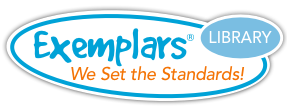Kindergarten - Geometry Unit
Standards covered:
- K.6 Geometry and measurement
-
K.6A
Identify two-dimensional shapes, including circles, triangles, rectangles, and squares as special rectangles. -
K.6B
Identify three-dimensional solids, including cylinders, cones, spheres, and cubes, in the real world. -
K.6C
identify two-dimensional components of three-dimensional objects such as the face of a tissue box is a rectangle. -
K.6D
Identify attributes of two-dimensional shapes using informal & formal geometric language interchangeably such as number of corners or vertices & number of sides. -
K.6E
Classify and sort a variety of regular and irregular two- and three-dimensional figures regardless of orientation or size. -
K.6F
Create two-dimensional shapes using a variety of materials and drawings.
The Geometry Unit involves the analysis of two- and three-dimensional geometric figures in order to understand their attributes. Students will answer questions such as:
- How are these two shapes alike? How are they different?
- Why is this shape a triangle? Why is this shape NOT a triangle?
- What shapes do you notice in the flat sides of this tissue box? What shapes do you notice in the flat surfaces of this soup can?
Summative Assessment Task
Students determine the total number of corners on three different shapes.
Instructional Tasks/Formative Assessments
Using craft sticks for sides and buttons for corners, students determine how many of each are needed to make three triangles.
Students create two different pattern block shapes using five green pattern blocks.
Students determine the total number of students sitting at different-shaped tables.
Students determine if there are enough paper clips to make two squares.
Students determine if Mary can make two rectangles using 12 craft sticks.
Students determine if the two pictures are alike.
Students determine how Bonnie can sort her buttons.
Students find the total number of sides on three shapes.
Students create rectangles using different amounts of orange pattern blocks.

The N/A classification refers to TEKS Standards that cannot be assessed through problem solving.
For this reason, tasks have not been included for these particular standards.
K.7A K.7B K.9B K.9C K.9D